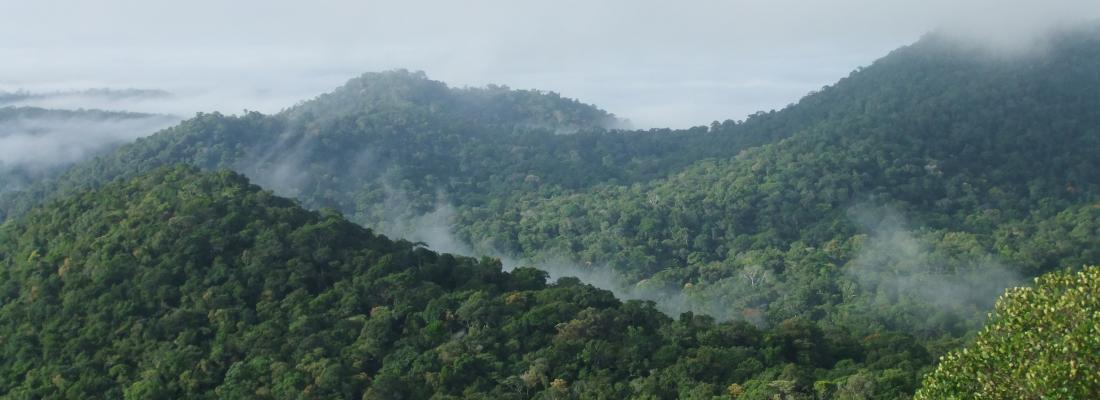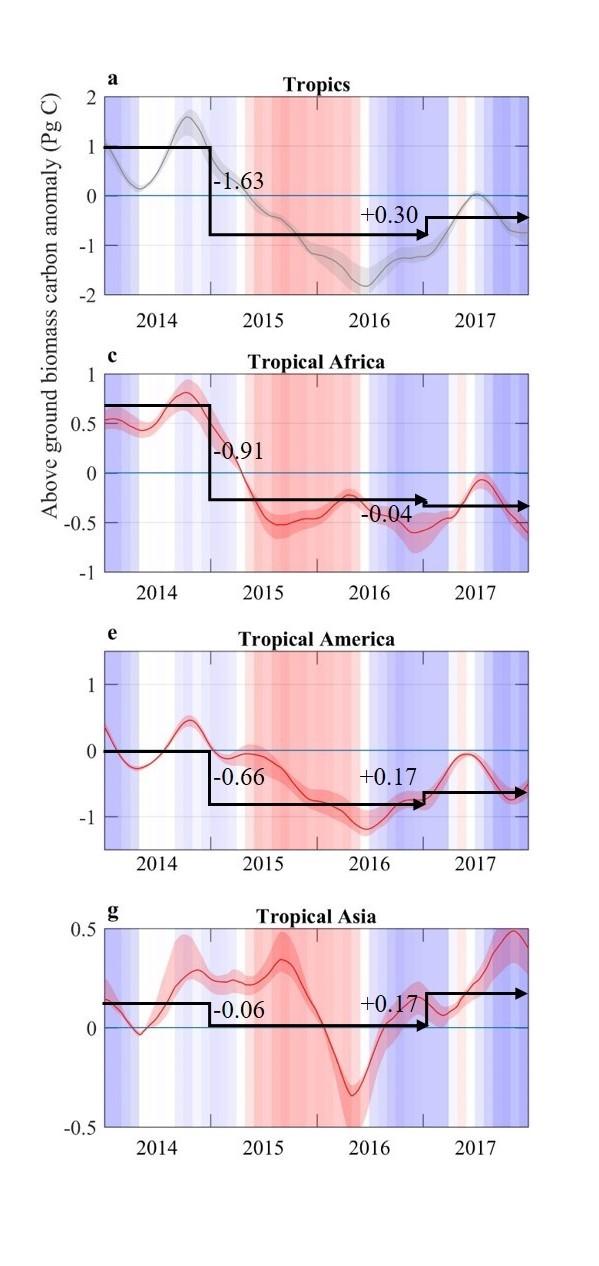Climate change and risks Reading time 3 min
Tropical forests in Africa did not recover from the strong 2015–2016 El Niño event
Published on 13 February 2020

The severe drought and extreme temperatures associated with the 2015–2016 El Niño event resulted in significant CO2 emissions from vegetation being released into the atmosphere, with a decrease in aboveground biomass carbon (AGC) stocks. As wetter conditions and lower average temperatures returned in the tropics from mid-2016 onwards, an increase in biomass production was expected, with a possible recovery to 2014 AGC levels.
However, researchers from INRAE, CEA and CNRS used a new dataset from the L-band vegetation optical depth (L-VOD) index and soil moisture and ocean salinity (SMOS) satellite observations to assess changes in the tropical forest AGC stocks for the 2010–2017 period.
The findings show that AGC losses in Africa accounted for 56% of the losses observed across the tropics (1.6 PgC1) during the 2015–2016 El Niño event.
Africa’s forests did not recover in 2017 after the 2015–2016 El Niño event
The researchers also observed that tropical vegetation AGC stocks dropped sharply over the 2014–2017 period (-1.3 PgC). About 70% of the overall net loss (-0.9 PgC) can be attributed to Africa, followed by America (-0.5 PgC).
By the end of 2017, despite a return to normal climate conditions, AGC stocks had not returned to 2014 levels in the tropics, with some local disparities: they continued to decline in Africa, were slowly approaching 2014 levels in Asia and America, and had recovered to 2014 levels in arid tropical zones.
The dynamics were similar in Asia and America regardless of whether the areas were deforested. However, AGC losses were greater in non-deforested areas. These losses in Africa could be explained by soil moisture depletion, linked to the cumulative effects of low rainfall and increased evapotranspiration, particularly in northern tropical Africa.
These results show that droughts and El Niño – phenomena that are likely to intensify – have long-term impacts on the vulnerability of carbon stocks in tropical regions. Successive events such as these could have dramatic cumulative effects on deep-rooting-zone drying and consequently on AGC losses in vegetation.

|
Change in aboveground plant biomass carbon stocks, estimated from the L-VOD index in tropical regions over the 2014–2017 period. Overall, the AGC stock in 2017 did not recover to 2014 levels prior to El Niño. While tropical forests in Asia did recover, tropical forests in Africa did not, and more importantly, their AGC stock levels continued to decline in 2017. © INRAE/ L. Fan |
|
Reference Wigneron et al., Tropical forests did not recover from the strong 2015–2016 El Niño event, Science Advances 05 Feb 2020: |
